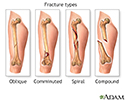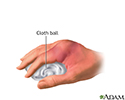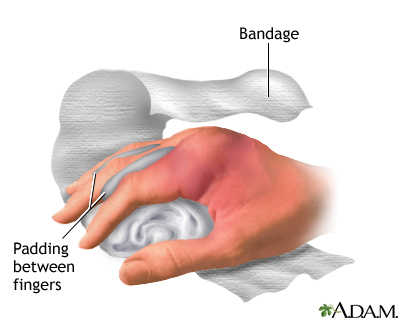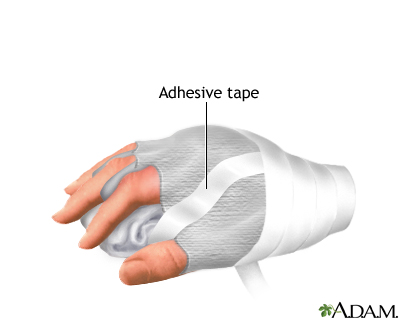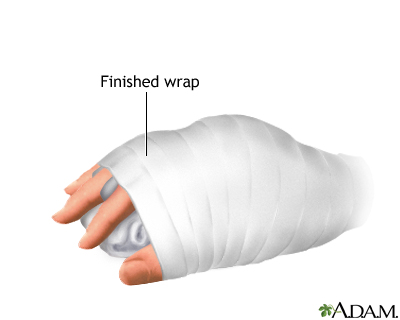How to make a splint
Splint - instructions
A splint is a device used for holding a part of the body stable to decrease pain and prevent further injury.
Considerations
After an injury, a splint is used to hold still and protect the wounded body part from further damage until you get medical help. It is important to check for good circulation after the injured body part has been immobilized.
Splints can be used for different injuries. For example, with a broken bone, stabilizing the area is important to reduce pain, prevent further injury, and allow the person to move about as much as possible.
First Aid
Here is how to make and apply a splint:
- Care for the wound first before applying a splint. Rinse or cover any open wound.
- An injured body part should usually be splinted in the position in which it was found unless it has been treated by a professional who is a specialist in that body part.
- Find something rigid to use as supports to make the splint, such as sticks, boards, or even rolled up newspapers. If none can be found, use a rolled blanket or clothing. An injured body part can also be taped to an uninjured body part to prevent it from moving. For example, you can tape an injured finger to the finger next to it.
- Extend the splint beyond the injured area to keep it from moving. Try to include the joint above and below the injury in the splint.
- Secure the splint with ties, such as belts, cloth strips, neckties, or tape above and below the injury. Make sure the knots are not pressing on the injury. DO NOT make the ties too tight. Doing so can cut off blood circulation.
- Check the area of the injured body part often for swelling, paleness, or numbness. If needed, loosen the splint.
- Seek medical help right away.
Do Not
DO NOT change the position of, or realign, an injured body part. Be careful when you place a splint to avoid causing more injury. Be sure to pad the splint well to avoid putting extra pressure on the injured limb.
If the injury is more painful after placing the splint, remove the splint and seek medical help right away.
When to Contact a Medical Professional
If an injury occurs while in a remote area, call for emergency medical help as soon as possible. In the meantime, give first aid to the person.
Seek medical help right away for any of the following:
- Bone that is sticking through the skin
- An open wound around the injury
- Loss of feeling (sensation)
- Loss of pulse or a feeling of warmth to the injured site
- Fingers and toes turn blue and lose sensation
If medical assistance is not available and the injured part looks abnormally bent, gently placing the injured part back into its normal position may improve the circulation.
Prevention
Safety is the best way to avoid broken bones caused by falling.
Avoid activities that strain the muscles or bones for long periods as these can cause fatigue and falls. Always use protective gear, such as proper footwear, pads, braces, and a helmet.
References
Auerbach PS, Constance BB, Freer L. Orthopedic injuries, splints, and slings. In: Auerbach PS, Constance BB, Freer L, eds. Field Guide to Wilderness Medicine. 5th ed. Philadelphia, PA: Elsevier; 2019:chap 18.
Chudnofsky CR, Chudnofsky AS. Splinting techniques. In: Roberts JR, Custalow CB, Thomsen TW, eds. Roberts and Hedges' Clinical Procedures in Emergency Medicine and Acute Care. 7th ed. Philadelphia, PA: Elsevier; 2019:chap 50.
Kassel MR, O'Connor T, Gianotti A. Splints and slings. In: Auerbach PS, Cushing TA, Harris NS, eds. Auerbach's Wilderness Medicine. 7th ed. Philadelphia, PA: Elsevier; 2017:chap 23.
Review Date: 6/13/2021
Reviewed By: C. Benjamin Ma, MD, Professor, Chief, Sports Medicine and Shoulder Service, UCSF Department of Orthopaedic Surgery, San Francisco, CA. Also reviewed by David Zieve, MD, MHA, Medical Director, Brenda Conaway, Editorial Director, and the A.D.A.M. Editorial team.





